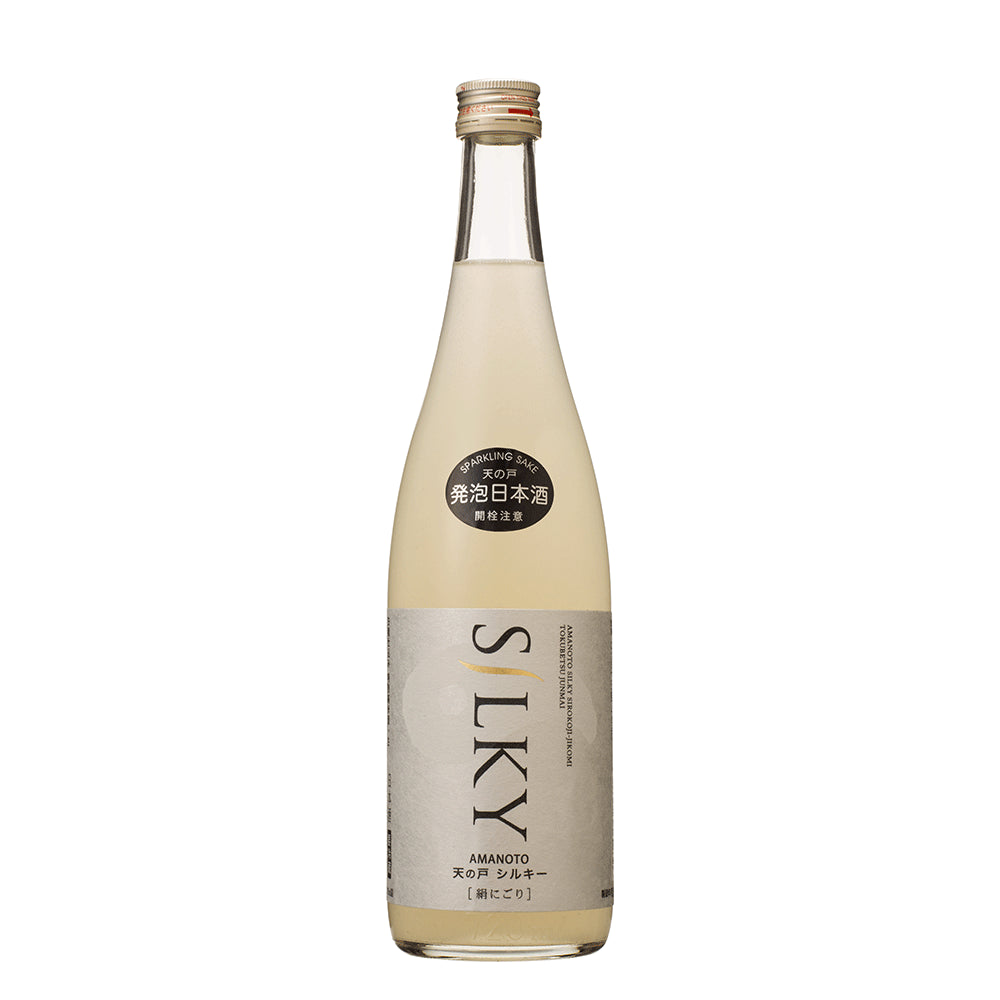-
 >
>
- Product list >
- Amanoto Silky Sparkling Ginjo unpasteurized (720ml)
Amanoto Silky Sparkling Ginjo unpasteurized (720ml)
詳しく見る
- *All prices shown are the product prices from the Japanpage:.
- *Product price can be shown in multiple currencies as reference values.
- *Payment should be made in Japanese yen.
- *After filling in delivery address, grand total (product price + shipping cost (packing + shipping + insurance) +tariffs & taxes) will be shown on the shipping cart page.
- *All prices shown are the product prices from the Japanpage:.
- *Product price can be shown in multiple currencies as reference values.
- *Payment should be made in Japanese yen.
- *After filling in delivery address, grand total (product price + shipping cost (packing + shipping + insurance) +tariffs & taxes) will be shown on the shipping cart page.
Awards
The Fine Sake Awards Japan2019 Sparkling SAKE Division Gold
The Fine Sake Awards Japan2017 Sparkling SAKE Division Gold
The Fine Sake Awards Japan2016 Sparkling SAKE Division Grand Gold
The Fine Sake Awards Japan2015 Sparkling SAKE Division Grand Gold
"Amanoto Silky Sparkling Ginjo, unpasteurized" is a kassei-seishu ("active sake"), which has a finely cloudy appearance and sparkling taste, as a result of the secondary fermentation of yeast inside the bottle. Because part of the moromi (fermenting mash) process involves the use of white koji (used to make shochu), it results in a citric acidic accent which would not be possible in a ki koji (yellow aspergillus) seishu. Meant to be a sake which can be drunk during meals, it is only moderately sweet, with a refreshing and smooth drinkability filled with finely carbonated bubbles and lemon flavor. In the past, this sake has received the highest gold medal prizes, three years in a row, at the The Fine Sake Awards Japan2019 competition, where delicious Japanese sakes that can be enjoyed in wine glasses are selected. This sparkling Japanese sake is perfect for making toasts with wine glasses.
Pairing food proposed from Vendor
Chinese cuisine, spicy foods
About "Amanoto"
The name comes from an ancient song that describes the legend of the "Gate of the Celestial Rock Cave of the Sun Goddess", "Amanoto". This sake is made using only brewer's rice harvested within a 5 km radius of the brewery, and brewed using only Junmai made to grow this particular rice. This sake is the culmination of such dedication and attention to details, a practice of "Terroir" which brings out the best in the region's unique characteristics.
Recommended temperature
- Atsukan (50 - 55℃)
- Jokan (45 - 50℃)
- Nurukan (30 - 40℃)
- Room temperature (15 - 20℃)
- Hanabie (10℃)
- Yukibie (5℃)
Type


Tag
Appearance
-
Clarity
Transparency
Hazy
-
Colour
Colorless
Dark brown
-
Intensity
Water
Deep
Nose characteristics
-
Intensity
Low
Strong
Taste characteristics
-
Light / Body
Light
Body
-
Sweet / Dry
Sweet
Dry
-
Simple / Complexity
Simple
Complexity
-
Acidity
Low
High
-
Umami
Low
High
-
Finish
Low finish
Long finish
Aroma and flavor
Detailed information
| Volume | 720ml |
|---|---|
| Size (L W H) | 7.5 x 7.5 x 29.5 cm |
| Weight | 1.1kg |
| Ingredients | Rice, Rice koji, Water |
| Region | Akita |
| Alcohol content | 15%vol. |
|
Sake Meter Value
|
-4.4 |
|
Acid level
|
2.5 |
|
Polishing ratio
|
60% |









